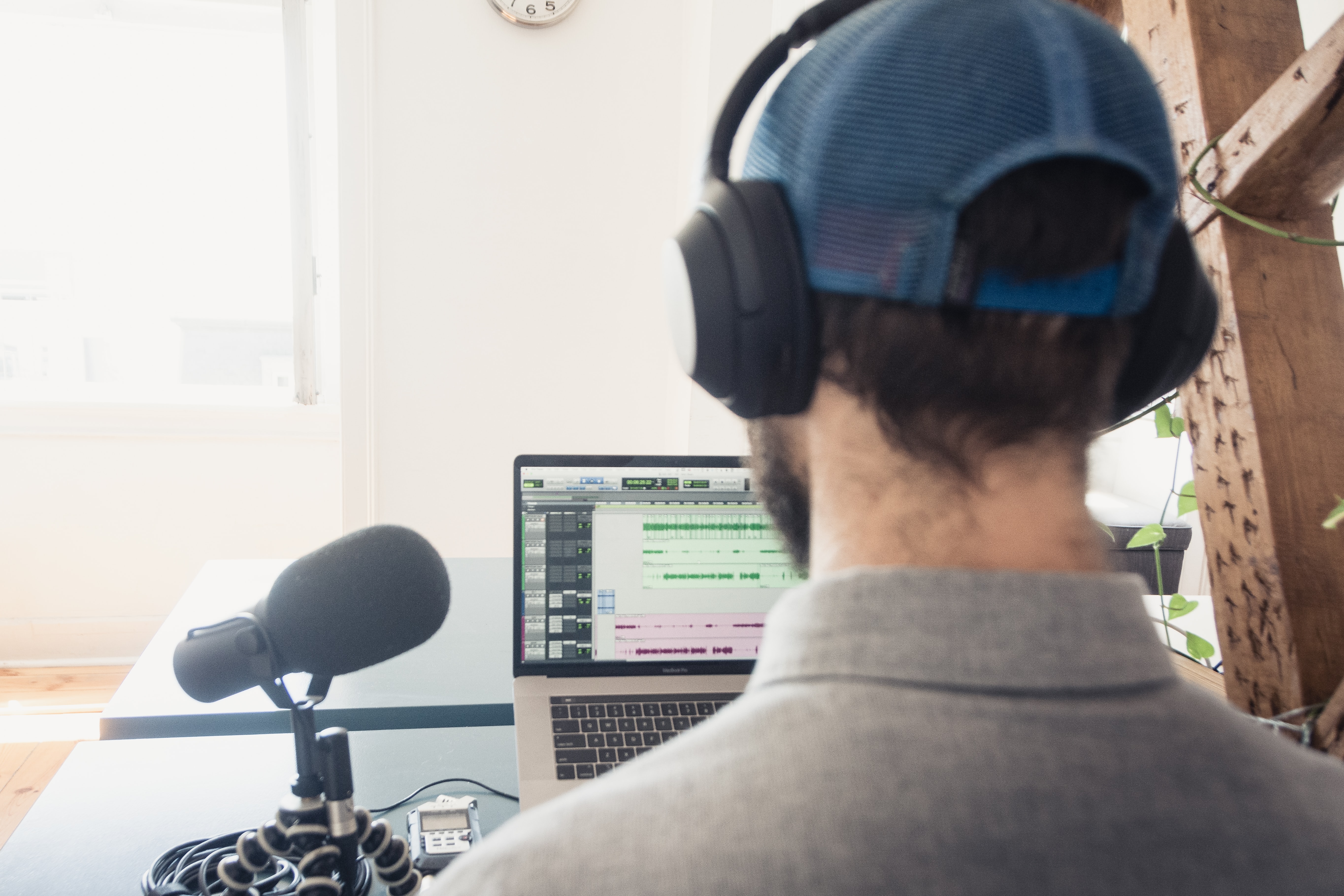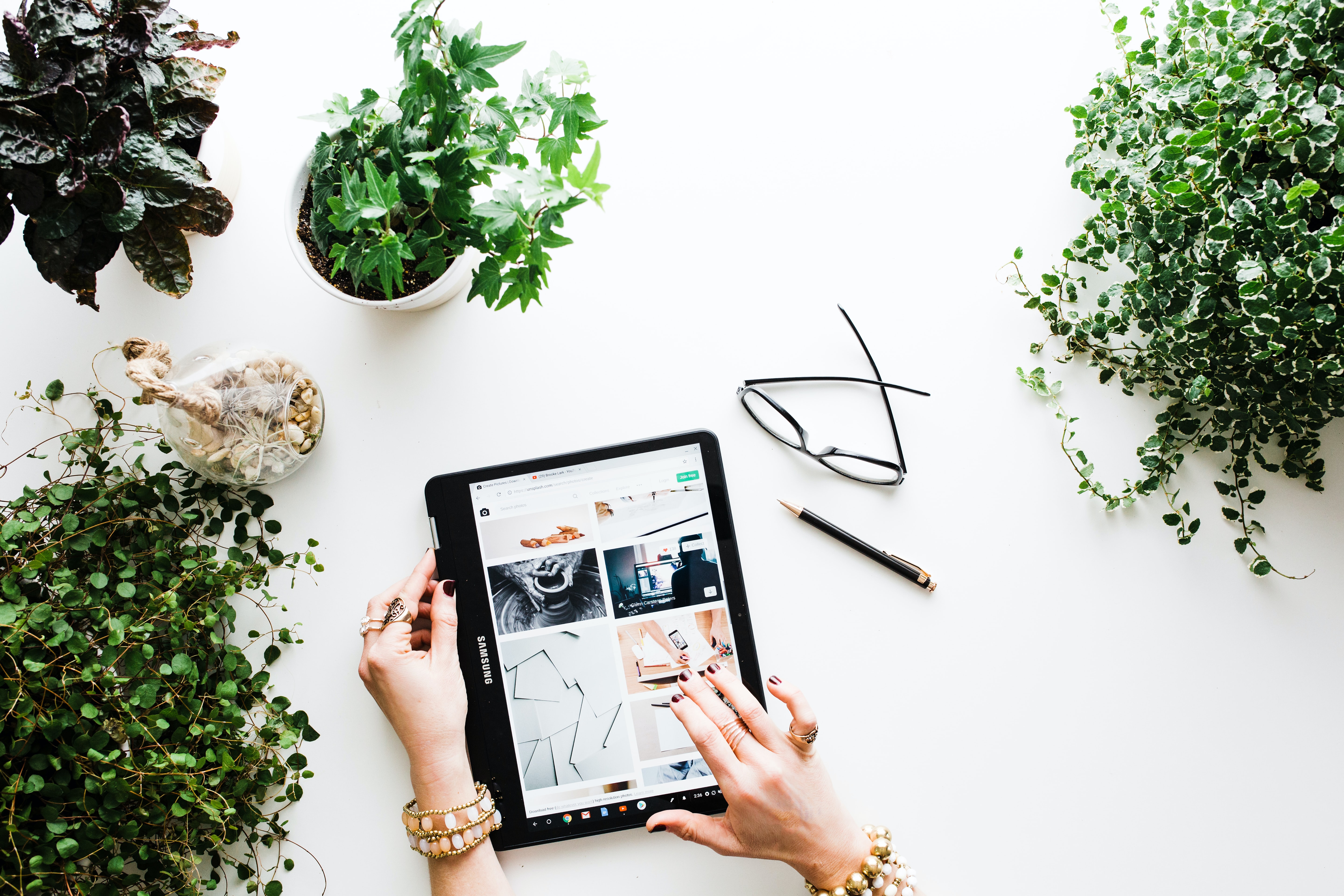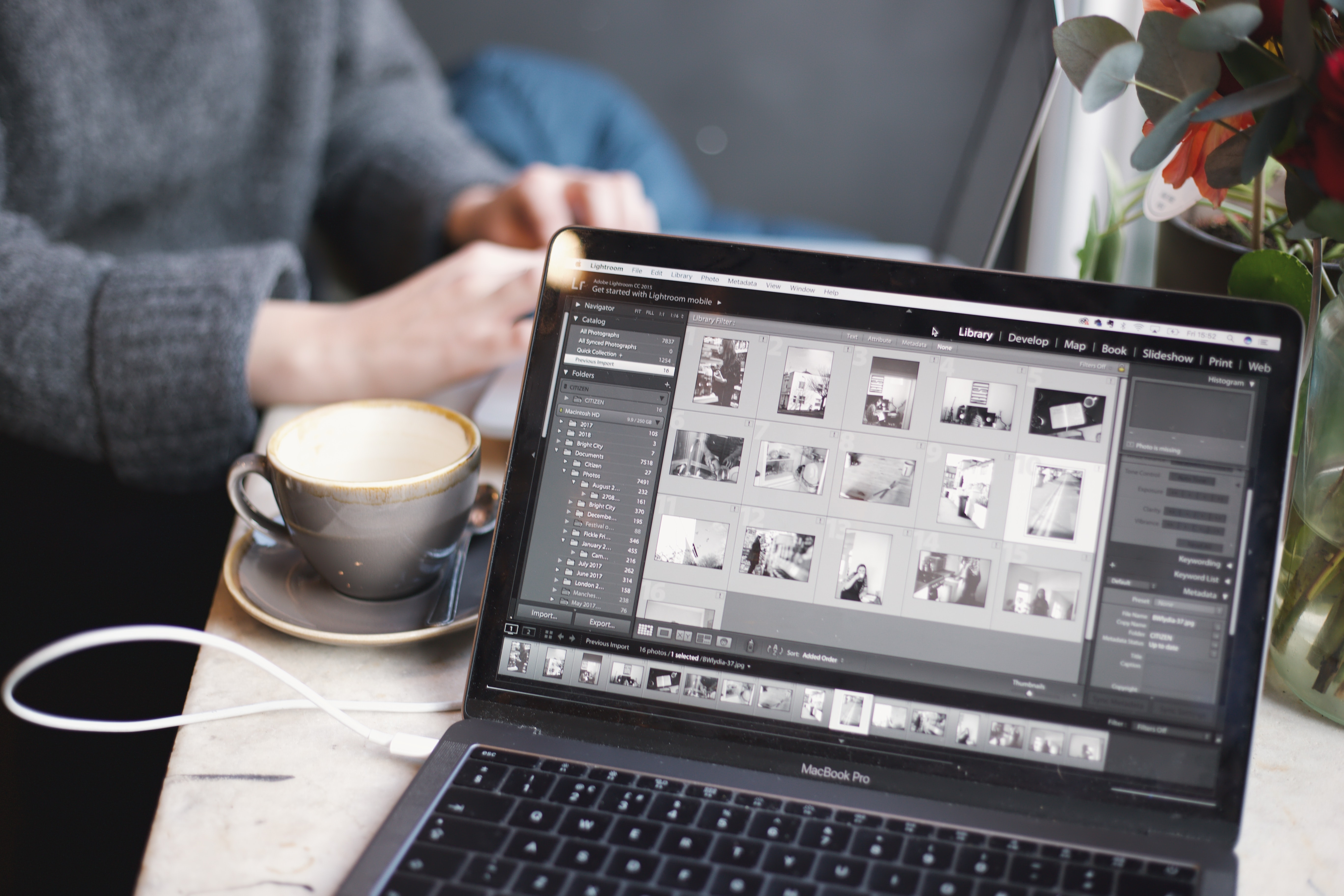Marketing your business effectively as a creative professional is an ongoing challenge. Perhaps you are not seeing the results you want, or simply looking for new ways to boost your content marketing strategy. Enter podcasting.
Podcasts exist in just about every niche you can think of. Perhaps you’ve even listened to a few yourself. Read on to learn how you can use podcasting as a marketing tool as a creative professional.
What is Podcast Marketing?
A podcast is an episodic audio show that is somewhat akin to talk radio, except that episodes are available for download on-demand as opposed to broadcasted live.
Podcast marketing simply refers to using a podcast to promote your products or services to an audience. At its core, podcasting is a form of content marketing. There are several effective ways you can use it, and we’ll cover some ideas in more detail later on. But first, why should creative professionals use podcast marketing?
Why Should Creatives Use Podcasts?
According to Brandastic, over 55% of Americans have listened to a podcast at least once, and 155 million people worldwide listen every week. That’s an enormous market you could be tapping into.
Podcasting is a fantastic way to communicate with a captive audience. People who listen to podcasts do so because they respect the host, trust their expertise, and find the content valuable. Podcasting strengthens your relationship with your audience, builds trust in your brand, and helps to establish you as an authority figure in your industry. If you include a call to action (CTA) at the end of each episode, your podcast can easily lead to new subscribers for your email list and potentially new customers.
It’s possible to build a community around a podcast. Podcast listeners tend to be very loyal to their favorite shows and enjoy connecting with others who also listen. This means your show can help you expand your reach even further. If your podcast takes off, don’t be surprised if active fan communities such as LinkedIn and Facebook groups, Reddit or Quora discussions, and podcast hashtags spring up.
Podcast marketing tactics also allow you to engage people who prefer to consume content in a different way. Not everyone enjoys reading a long blog post, but those who don’t might happily listen to a podcast episode. People can also listen to podcasts while doing other things, such as driving or cleaning the house.
Don’t forget: you can always repurpose podcast content, such as turning a long video into a podcast, converting it into a blog post, creating a video for your Youtube channel, or using soundbites on your social media channels. All this can aid in your podcast promotion, too. See how all your channels can work together?
Finally, podcasting is relatively easy and inexpensive and if you want, you can also sell airtime on your podcast to other brands and build another income stream. Preston Lee, creator of one of the most famous podcasts for freelancer successfully secured over $30,000 in sponsorship in his first year of podcasting
We’ll look at what you need to get started shortly, but trust me when I say you don’t need to spend a fortune to start a podcast.
Creative Examples
I thought it might be helpful to look at some podcast examples in the creative industries to get you inspired. Here are just a few awesome ones.
Creative Rebels
Creative Rebels is hosted by David Speed and Adam Brazier, the co-founders of Graffiti Life (a street arts collective) and Parlour Tattoo.

The show features interviews with “creative people who have rebelled against the 9-to-5”. Each hour-long episode features a different individual in the creative industries, and offers practical advice for those looking to follow in their footsteps.
Meet the Creatives
Meet the Creatives is a podcast by Rob Johnston, a New York-based designer and photographer. Johnston’s stated aim is to “build a community that connects thousands of entry-level creatives from around the world”. The show features interviews with podcast guests from some of the world’s biggest companies including Google, Facebook, Disney, and Nike.

Meet the Creatives has grown beyond just a podcast. Johnston now hosts a series of live events under the Meet the Creatives brand.
Design Matters
Design Matters first hit the internet in 2005, only about a year after the first-ever podcasts were released in 2004. It was the first design podcast in the world and, fifteen years later, founder Debbie Millman is still releasing new interviews with designers, artists, musicians, creative professionals, and creative thought leaders.

Nature Photography Podcast
Season One is now available for The Nature Photography Podcast. This first season is a sound immersive podcast dedicated to photographing wildlife. From how to find Raptors, to how to photograph Coyotes and how to get those great Close-up photographs of insects and flowers. All episodes of the first season are available today at Apple podcasts or Spotify.

These are just four examples from the thousands of creative podcasts out there. I suggest you find a few that appeal to you, and start listening. You’re sure to learn something and you might just enjoy it, too!
How to Start Your First Podcast
If I’ve convinced you about the benefits of starting a podcast and committing to podcast marketing, you’re probably wondering how to get started. Let’s have a look at the three basic cornerstones of starting your own podcast.
Equipment
Many people are put off the idea of podcasting because they worry that they’ll need lots of expensive equipment. Fortunately, you don’t.
All you need to get started is a decent microphone and a means of recording. In a pinch, the microphone built into your computer or headset will do, though I recommend investing in a good mic if you can. Many computers now come with inbuilt recording capability. If not, you can easily download a free audio recording program. One other software that might come in handy for you is an audio to text converter. With it, you can automatically convert your podcast to text form and use it as a different form of content on other platforms.
Hosting
Once you’ve recorded your first episode, you’ll need to get it online. That means investing in a podcast hosting service.
There are many different hosting services available, so finding a home for your podcast on a great platform is partly a matter of preference. You’ll need to take into account several factors, including:
- Sound quality
- Cost
- RSS feed functionality for ease of distributing your show. After you upload your audio, your host should provide you with a simple RSS link. You can then submit this to podcast networks and directories, such as Apple Podcasts, iTunes, Stitcher, and Spotify, to put your show out into the world. This will allow people to listen to it using their favorite podcast apps, such as Overcast.
- Storage and bandwidth.
- Availability of an embeddable media player to use on your podcast website. If you go down this route, don’t forget to include show notes. Optimize them with the relevant keywords to boost your search engine optimization (SEO) results.
- Analytics tools. These are helpful for allowing you to see how your show is doing and make improvements accordingly. For example, you’ll be able to see how many new listeners you gain with each new episode.
Take your time, do your research, and ask others for recommendations. Don’t forget to check out reviews of hosting services before you commit, too.
Editing & Sound Quality
Chances are, you won’t simply record your podcast and then upload it as it is. You’ll need to do some editing to make the best podcast you can.
There are two options here: do it yourself, or pay a professional to do the editing for you. If you decide to go down the professional route, you’ll save time but can expect to pay a premium for it. You can use an app like Bouncecast, services like Podigy can help, or you can hire a freelance audio editor.
If you decide to do the editing yourself, you’ll need a piece of audio editing software. Options include Audacity, Logic Pro X, Garageband and Adobe Audition, amongst many others. Choose one that fits your budget, skill level, and needs.
Here are a few top tips to help you boost your sound quality:
- Record in the quietest space you can find. I know of one podcaster who used to record in a closet!
- Listen to what you record bit by bit, use a high-quality headphone or a wireless bud. Wireless buds come at many different quality and prices, make sure you do some research on what many brands are charging for them.
- Use a pop filter. This cuts down on the “popping” or “whooshing” sounds that can happen when you speak into a microphone.
- If you’re interviewing someone, use separate microphones – even if you’re in the same physical space.
Don’t panic if your first episode or first few episodes aren’t perfect. You can improve (and invest in better equipment) with time!
What to Talk About? Creative Podcast Ideas
Before you embark on your podcast marketing journey, you’ll need to decide what you want to talk about. There are many different formats your show can take, and all have their own advantages and drawbacks.
Start by defining your goals. Presumably, you are starting a podcast because you want to market your services as a creative professional. Next, make sure you understand your target audience. What sort of podcast content is likely to appeal to them the most?
Another option is to mix it up. Every new episode doesn’t have to follow the same format. You can also follow one format most of the time but occasionally throw in something different, like an expert interview or a giveaway, to keep things interesting.
Here are a few ideas to get you started.
Storytelling
Storytelling is widely accepted as one of the most effective marketing techniques you can use. So why not incorporate it into your podcast and tell a different story each episode? Remember that the stories should be related to your niche and the services you’re trying to sell. They could be from your own experience working in the industry, or you could bring in others’ experiences.
Steve Folland’s Being Freelance is one example of a storytelling podcast in the creative space:

Each episode, Folland interviews a different freelancer, who shares a story from their journey and the things they learned from it.
How-to
How-to content is always popular. If your subscribers are keen to learn, you can offer them real value through a how-to series.
For example, if you’re a freelance photographer, why not create a series of episodes that will help your podcast audience learn how to take better photographs at home? If you’re a writer, explore different writing techniques or grammatical pointers in each episode. And so on.

Honest Designers (pictured above) is a podcast for creative professionals that uses the how-to format to cover a wide range of topics about surviving and thriving in the creative industries.
Expert interviews
Expert interviews are another always-popular podcast format and are a fantastic option if you’d rather have a conversation than record by yourself. Your audience can benefit from a wide range of perspectives and learn from some of the most influential voices in your industry.
If you’re looking for voice-overs actors, you can check out Voice Crafters to find the right voice for your projects.
Just make sure you’ll be able to get access to the people you want to interview. Most experts will be only too happy to appear on a podcast – after all, it’s also good publicity for them. So reach out to that expert whose work you love or that influencer you admire. No need to meet physically, cou can record the podcast remote in a high quality. However, they are busy people, so you may have to plan in advance.
Overtime is Dribbble’s official podcast, and utilizes the interview format in many of its episodes:

Podcast host Meg Lewis interviews experts from across the design industry, allowing the show’s audience to learn something different from each new voice.
Discussion or debate
A twist on the interview format is the discussion or debate format. There are two ways to do this: have a regular co-host, or bring on a different guest co-host each week.
The advantage of a discussion-based show is that you don’t have to do all the talking, and your audience can benefit from two (or more) perspectives. However, if you’re working with someone else, you’ll need to work harder to schedule recording times and divide work evenly. You’ll also need to make sure you can actually work together for more than an episode or two.

Art Attack with Lizy Dastin and Justin BUA is a debate podcast themed around happenings in the art world. The two hosts bring very different perspectives to the table, leading to lively discussions.
Wrapping Up
Hopefully you now understand the benefits of podcasting as a digital marketing tool. Times are challenging for many creative professionals right now, and you might understandably be looking for new ways to market your business.
If you want to connect with your fans, reach new audiences for demand generation, build your authority as an expert in your industry, and attract new prospective clients to your business, look no further than podcasting. It’s cost-effective, it’s fun, and it works! There’s no wonder so many marketers are giving it a go. What have you got to lose?
Here’s to releasing your first episode and launching your new podcast!
Bio
Eduard Klein is an international digital growth marketer, blogger, and entrepreneur with a global mindset. He guides people through the process of starting and growing a digital business, riding the wave of digital technology and marketing without getting swept away.


